A history of Christmas traditions in the Royal Navy
- View news filtered by: 21st Century
- View news filtered by: Early 20th Century
- View news filtered by: Professional Navy
- View news filtered by: Culture, Sport and Leisure
- View news filtered by: Customs and Traditions
- View news filtered by type: Blog

Christmas is a time for friends, family, and merriment. But life can be different when you’re serving, as our collection at the National Museum of the Royal Navy shows. We’ve put together a selection of photos to shine a light on the diverse forms of Christmas traditions and celebrations in the Royal Navy. It includes images from HMS Protector, a centre point of the Worlds Beneath the Waves exhibition only at Portsmouth Historic Dockyard.

Normally, the Royal Navy has a very strict hierarchy, with set ranks and expected roles. Christmas is a time that brings everyone together. For example, it sees officers lend a hand with the Christmas dinner, either serving it or helping the chef in the kitchen.
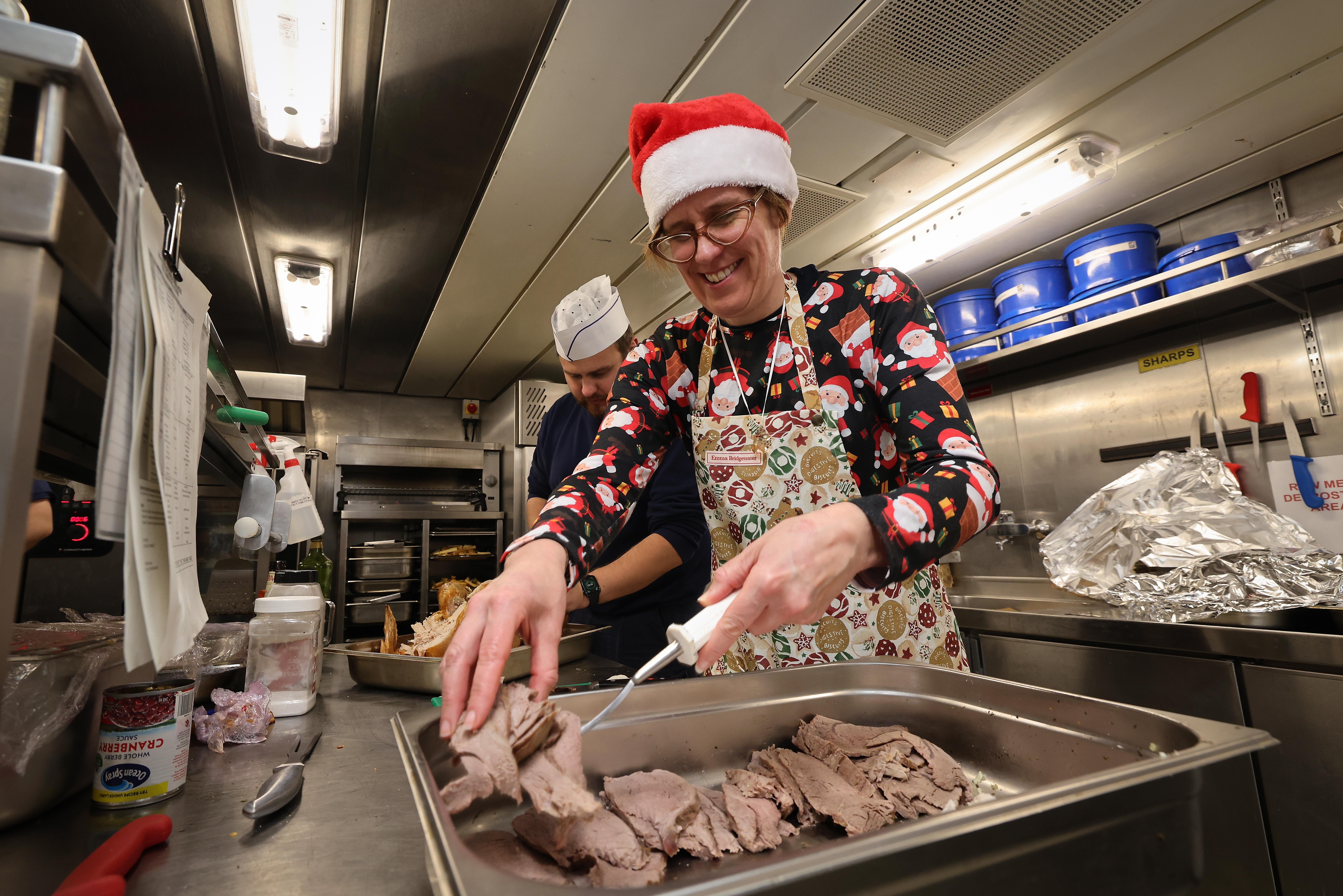
The Royal Navy also take their own twist on many existing Christmas traditions. One particular activity takes place on ‘Stir-Up Sunday’, traditionally the last Sunday before Advent. This date is observed by Catholics and is often associated with making and mixing Christmas puddings. In the Royal Navy this takes on an added dimension, as it is the Commanding Officer and the most junior sailor who do the mixing, although this may be a more modern tradition. On Christmas day, the pudding is served, and he most junior sailor becomes captain for a day, and the captain takes over the junior’s role.
Performances and plays are also a major part of any Royal Navy Christmas celebration, from traditional nativities to stories involving fancy dress of all varieties.
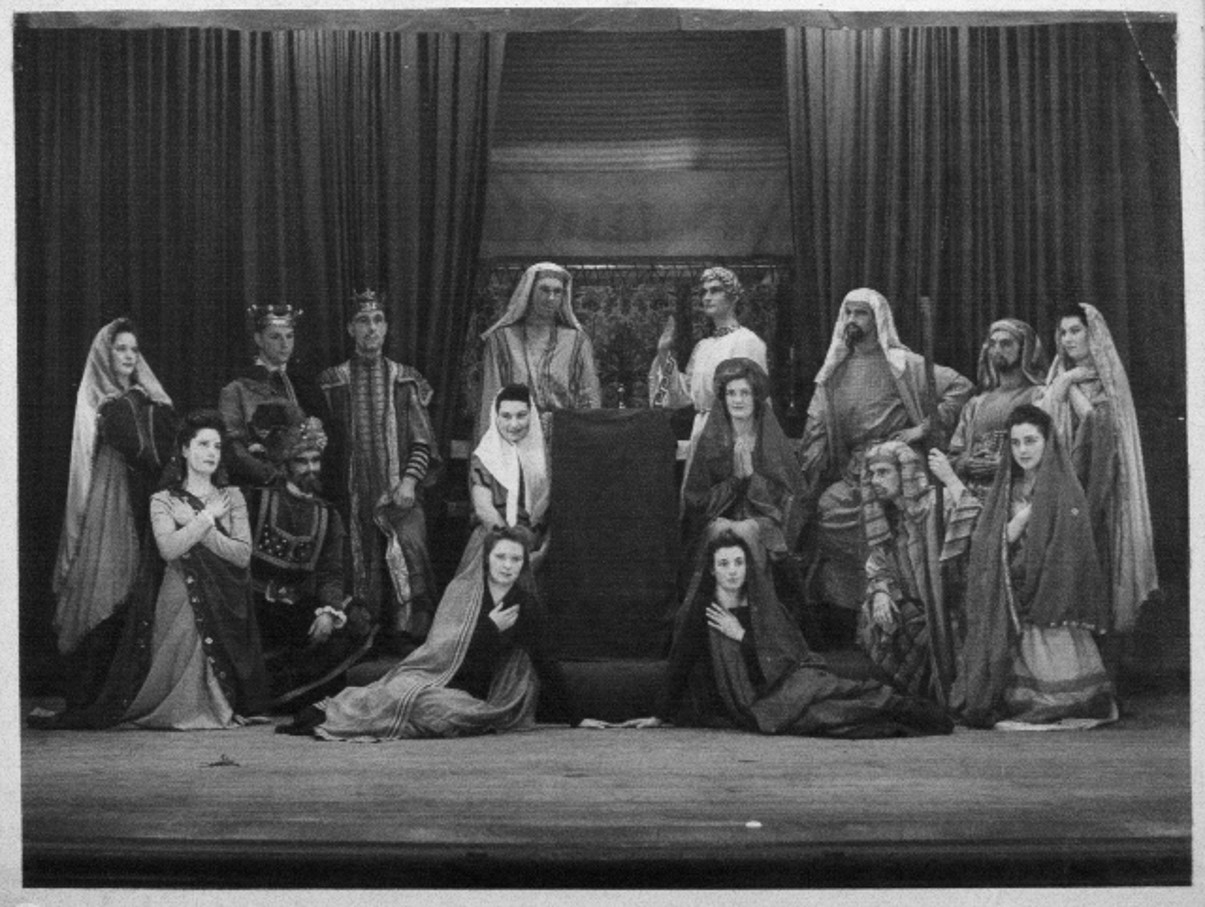

Football and rugby are also often played. Sometimes lower ranks were positioned on one team, and higher ranks on the other. The below photo was taken at HMS St. Vincent, a shore establishment which at that time was for training boys and young men.
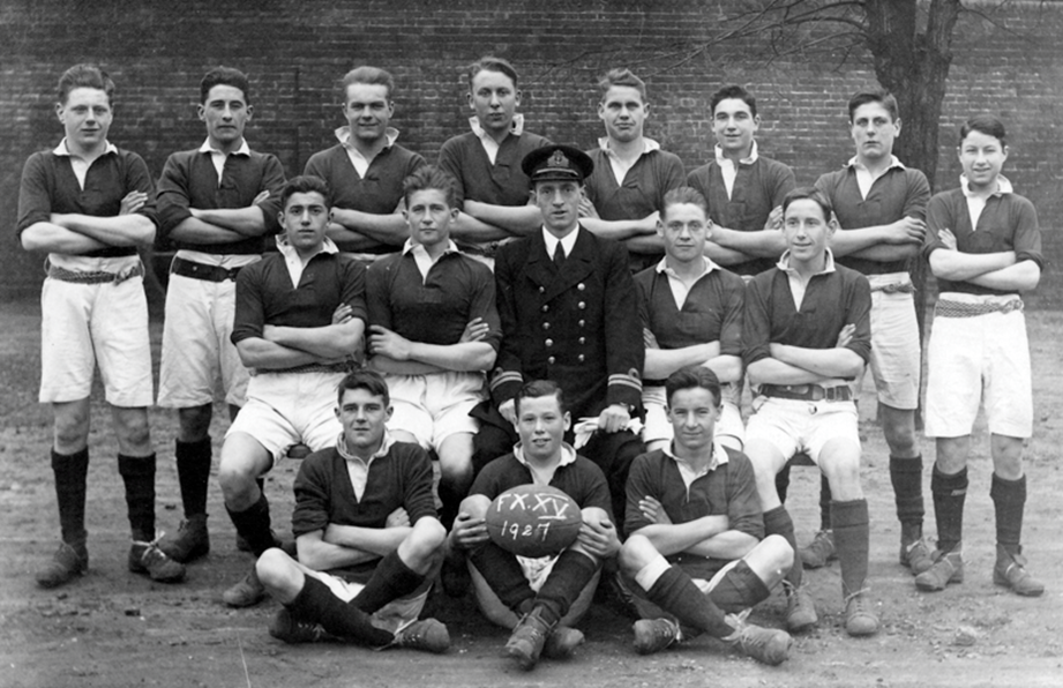
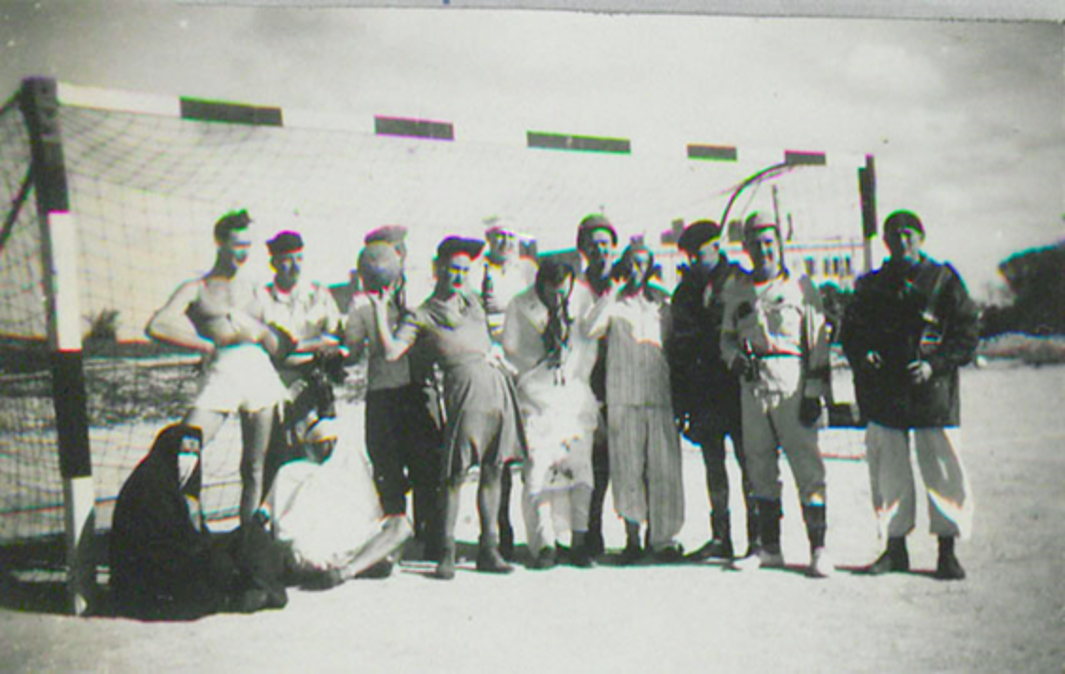
Perhaps one of the biggest changes for the current Royal Navy from those of the past is with technology. Gone are the days of sending letters back home, serving members of the Royal Navy can Skype or call family members over long distances. They can even take calls on Christmas day if they’re away from home.
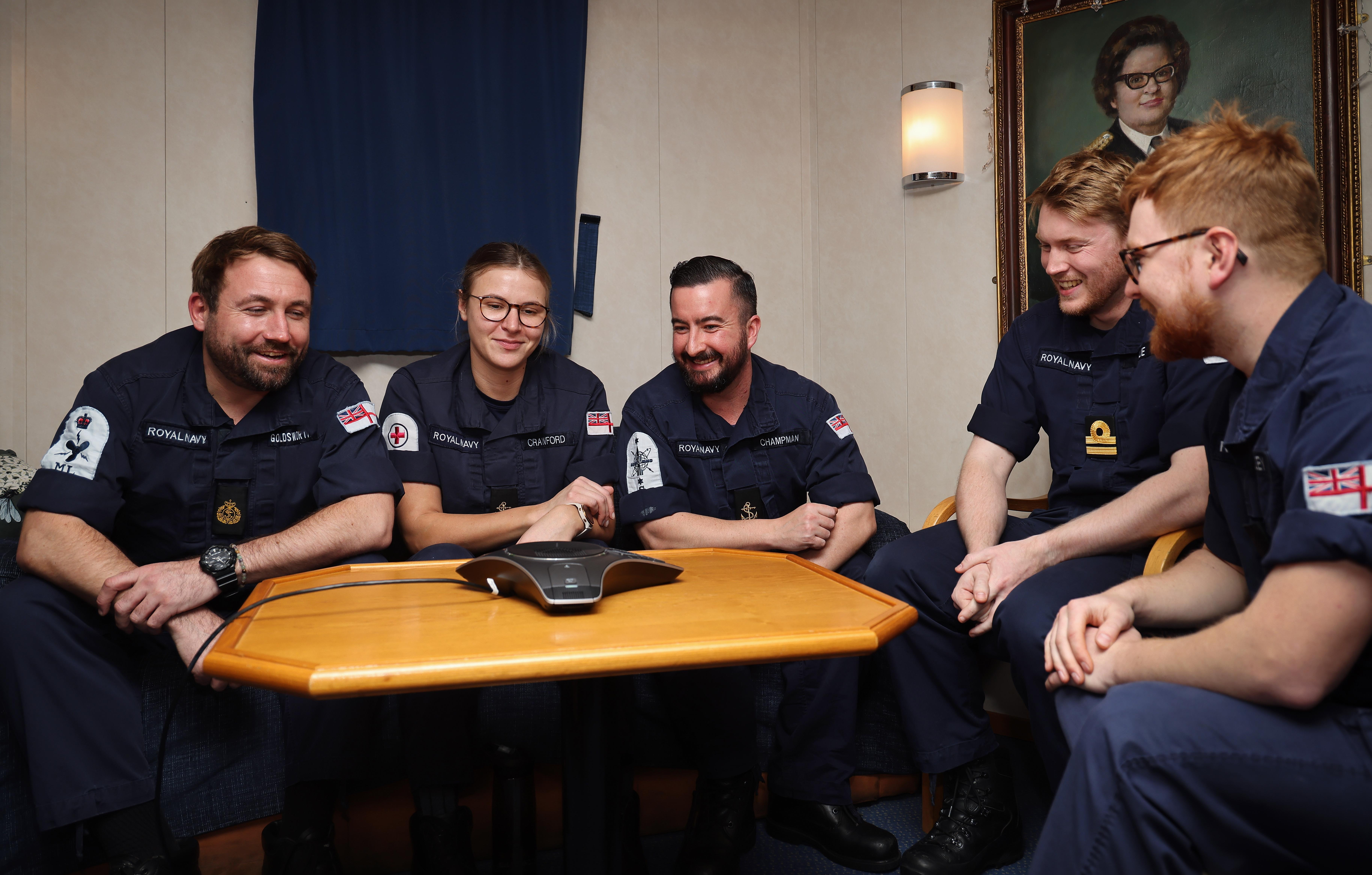
One item in the collection, a plain bottle of 1930s Whisky, especially showcases the sacrifice of the armed forces in times when others may be celebrating. Historically, in times of war these moments of peace were harder to find. While most people know about the truce on the Western Front in 1914, for the Royal Navy the situation was less festive. On Christmas Day 1914 the Royal Naval Air Service (the precursor to the Fleet Air Arm) conducted a raid at Cuxhaven, Germany, aiming to damage German zeppelins.

This bottle was a raffle prize at the Astley Arms in Northumberland, won on Christmas Eve 1939 by Petty Officer Leonard Wilson. Serving on HMS Seahorse Wilson didn’t get the chance to pick up the bottle before his submarine left for patrol on 26 December. Seahorse sadly became the first British submarine lost to enemy action during the war on 7 January. Mrs Lydia Jackson, the landlady of the Astley Arms, waited for 30 years for the prize to be collected but on her retirement in 1971 she presented the bottle to the Submarine Service, before it made its way into the National Museum’s collection (RNSM G24/2/71).
The festive season in the Royal Navy is a time for celebration, while not forgetting important duties which are year-round. Are you serving in the Royal Navy and have some great Christmas memories? Or have you got family who served and have some equally fantastic festive photos? Share them with us on social media. A new section showcasing these items and even more relating to the festive season is available on the collections portal.
If you want to know more about what life is like serving in the Royal Navy than our Hear My Story gallery is a great place to start. Located at the National Museum of the Royal Navy Portsmouth, you can also see the Worlds Beneath the Waves exhibition to learn more about HMS Protector.
For a look at life within the other branches of the Royal Navy you can visit our other museums. The Fleet Air Arm Museum tells the history of how the navy took to the sky while the Royal Navy Submarine Museum takes you to the bottom of the seabed.